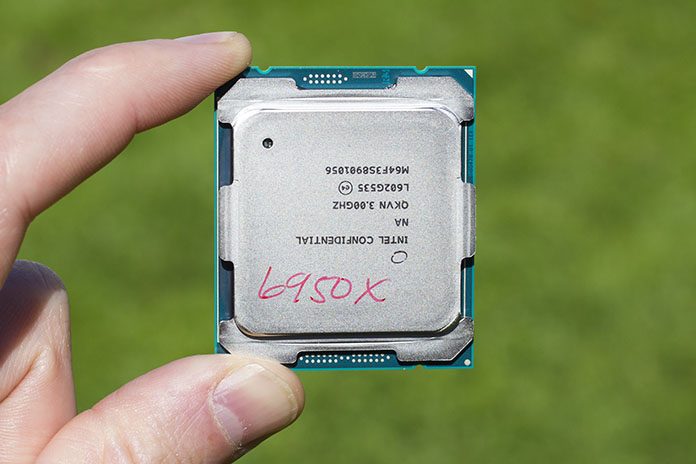In the ASUS Thermal Control Tool Guide, we discussed how to work around some of Broadwell-E’s thermal constraints to achieve better overclocks. While that guide provides a lot of information, there’s a host of additional details that help us understand the ins and outs of Broadwell-E overclocking. This guide provides that info and shows you how to overclock these beastly CPUs with an ASUS motherboard.
CPU and motherboard cooling recommendations
Cooling matters for CPU overclocking – always has – but, if you need some objective data to put things into perspective, take a look at the following table:
| CPU | Frequency | Vcore | Load temps | Cooling | Stable? |
|---|---|---|---|---|---|
| i7-6950X | 4.3GHz | 1.25V | 55C | Custom water cooling -triple rad | 1 hour encode passed |
| i7-6950X | 4.3GHz | 1.25V | 65C | Water cooling – triple rad (AIO) | Encode failed after 30 mins |
| i7-6950X | 4.3GHz | 1.275V | 68C | Water cooling – triple rad (AIO) | 1 hour encode passed |
| i7-6950X | 4.3GHz | 1.275V | 85C | Air cooling Noctua NH-D15 | Encode failed in under 2 mins |
| i7-6950X | 4.3GHz | 1.30V | 91C | Air cooling Noctua NH-D15 | Encode failed in under 2 mins |
If air cooling is the only option, a Noctua NH-D15 is sensible for the Core i7-6950X and will allow some overclocking, though cannot compete with a good water cooling setup, as evidenced above.
A good water cooling loop helps reduce Vcore requirements and offers better stability by virtue of lower CPU temperatures. As a bare minimum, we’d recommend a triple radiator setup and preferably a custom loop rather than an all-in-one design, as a 10C drop in load temperatures can help lower Vcore and improve stability. If you’re shelling out for a Broadwell-E CPU – especially the i7-6950X – don’t skimp on good CPU cooling.
Care should be taken to ensure the motherboard VRM heatsink has airflow across it if overclocking the i7-6950X CPUs past 4GHz. A good rule of thumb is to provide airflow for any load that exceeds 150W through the onboard VRM.
PSU requirements
The latest ASUS X99 motherboards feature an EPS 12V 8-pin and a 4-pin connector. Both should be used when overclocking. If only the 8-pin is used, the over-current protection circuit of some PSUs will trip. If only an 8-pin connector is available, ensure the PSU can deliver over 30 Amps to the EPS 12V rail.
Our new X99 motherboards also feature a detection circuit that prevents power-on if the 4-pin connector is used on its own (for obvious reasons).
CPU frequency expectations
Having tested hundreds of Broadwell-E CPUs internally, we’re in a position to share meaningful data related to core frequencies:
| Percentage of capable CPUs | Frequency | Vcore |
| 20% | 4.4GHz | 1.38V |
| 75% | 4.3GHz | 1.35V |
| 5% | 4.2GHz | 1.35V |
These frequencies represent Handbrake encoding stability. Most samples are capable of running at 4.3GHz with 1.35Vcore, and a few achieve 4.4GHz with a little more voltage. The worst samples we have seen require 1.35V for 4.2GHz. These frequencies are not exactly scintillating, but you can extend Broadwell-E’s overclocking headroom for light-load applications by using the ASUS Thermal Control Tool.
The table below shows the maximum Vcore values we use with high-end water-cooling:
| CPU | Max Vcore with water cooling |
| i7-6950X | 1.225V Prime95 1.38V Handbrake |
| i7-6900K | 1.275V Prime95 1.43V Handbrake |
| I7-6850K, i7-6800K | 1.33V Prime95 1.47V Handbrake |
These voltages are based on CPU core temperatures and power consumption. For those of you that are wondering, yes, Prime95 with AVX2 instructions consumes more power than Handbrake. Either way, our guidelines are to keep full-load temperatures under 80 Celsius and power consumption under 2 x stock TDP, whichever comes first.
The maximum voltage when using air cooling will need to be reduced by 0.1V or more, depending upon ambient temperatures and the capabilities of the cooler being used.

